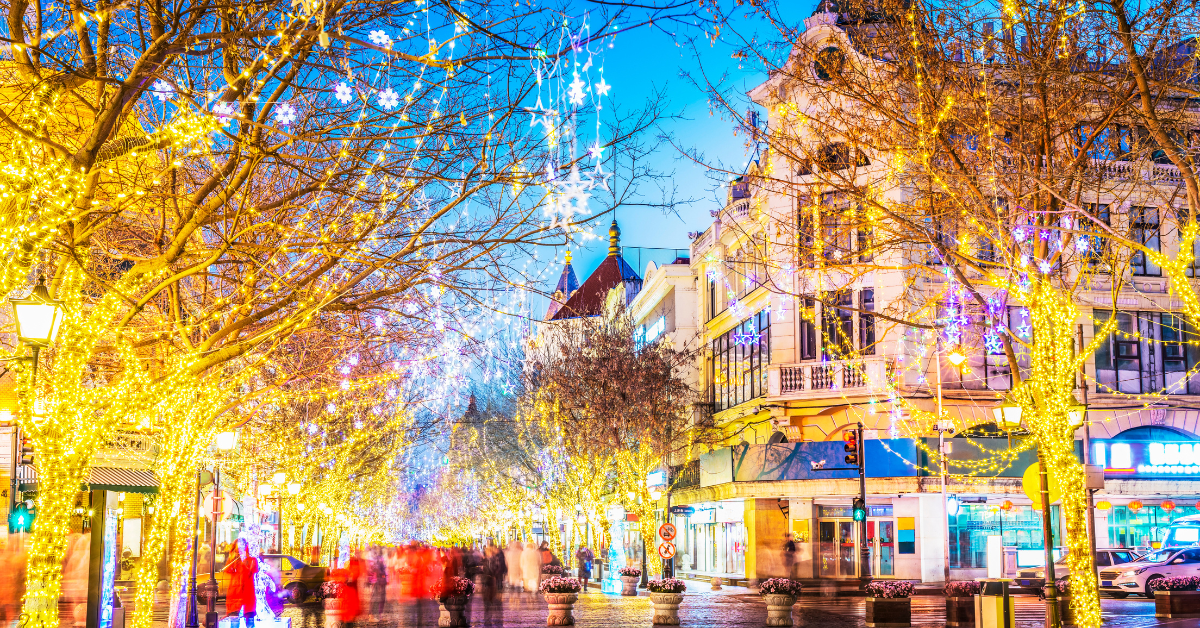Harbin, a key city in Northeast China, has two Kanji spellings in Japanese: 「哈爾浜」 and 「哈爾濱」. These forms are not mere variations but reflect different historical and cultural contexts. Understanding why both exist helps us see Harbin not only as a geographical name but also as a symbol of Japanese–Chinese interaction across history.
The Kanji Spellings of Harbin
Harbin is the capital of Heilongjiang Province in China, a leading metropolis of the north. In Japanese, two Kanji spellings exist: 「哈爾浜」 and 「哈爾濱」.
| Spelling | Reading | Characteristics |
|---|---|---|
| 哈爾浜 | Harubin | Used in Japan for many years, commonly seen in prewar publications and maps. |
| 哈爾濱 | Harupin | The official Chinese spelling, now widely used internationally. |
The use of 「浜」 in Japan reflects the familiarity of this character in Japanese place names, making it feel more approachable. In contrast, the formal Chinese spelling uses 「濱」, which is officially adopted in administration.
The Origin of the Name “Harbin”
The name “Harbin” originates not from Chinese, but from a Tungusic language. Its meaning is “a place for drying and stacking hay”, reflecting the agricultural and pastoral lifestyle of the region.
Until the late 19th century, Harbin was only a small village. However, it rapidly developed after the construction of the Chinese Eastern Railway by Russia, transforming into a railway hub and an international city attracting diverse ethnic groups.
Japan’s Connection with Harbin
In the early 20th century, Japan became deeply involved with Harbin through the establishment of Manchukuo, railway projects, and economic activities. Many Japanese settled in the city, building schools, hospitals, and commercial districts, which gave Harbin the character of a cosmopolitan, multicultural city.
| Period | Japan’s Involvement |
|---|---|
| Late Meiji – Taisho Era | Development of South Manchurian Railway and economic activity |
| Early Showa Era | Formation of Japanese districts, establishment of schools and hospitals |
| Postwar Period | Japanese withdrawal, adoption of the official Chinese spelling 「哈爾濱」 |
The frequent use of 「哈爾浜」 in prewar documents reflects Japan’s influence during its occupation and economic expansion. After the war, 「哈爾濱」 became the standard spelling, even in Japan, especially in academic and media contexts.
Japanese Perceptions of Harbin
The image of Harbin among Japanese people varies by generation and era.
| Generation | Main Perceptions |
|---|---|
| Prewar | Center of Manchukuo, Japanese districts, European-style architecture, harsh winters |
| Postwar | City symbolizing Siberian cold, memories of war |
| Modern | Ice and Snow Festival, tourist city, Russian-style cityscape, culinary culture |
Thus, Harbin embodies both historical memory and modern tourism appeal for Japanese people.
Cultural Appeal of Harbin
Harbin is often called the “Moscow of the East” due to its unique blend of Western architecture and Chinese culture. Its most famous attraction is the Ice and Snow Festival, where enormous ice sculptures and illuminated ice palaces turn the city into a winter wonderland.
Culinary culture is another attraction, with Harbin Beer, Russian-style bread, dairy products, and dumplings all popular. These elements appeal not only to international visitors but also to Japanese travelers.
Harbin as a Sports City
Harbin is also recognized as a center for winter sports. Ice hockey and speed skating are particularly strong, and the city serves as a major base for Chinese national athletes.
| Sport | Characteristics |
|---|---|
| Ice Hockey | Many national team players come from Harbin. |
| Speed Skating | Equipped with ice rinks, host of national and international competitions. |
| Skiing | Large ski resorts near the city attract both athletes and tourists. |
In 1996, Harbin hosted the Asian Winter Games, marking a turning point in China’s winter sports development. Today, the city plays a role in training athletes and hosting events as China prepares for global competitions such as the Winter Olympics.
Modern Exchanges Between Japan and Harbin
Today, Japan and Harbin continue to maintain ties through tourism, academia, and business. University partnerships, cultural exchange programs, and Japanese tourism at Harbin’s winter events are ongoing.
| Field | Exchange Activities |
|---|---|
| Tourism | Visits to winter festivals, sightseeing in former Russian quarters |
| Academia | University research partnerships, Japanese language education |
| Economy | Trade and investment opportunities |
Prewar Japanese-built structures and cemeteries remain, serving as historical research sites and reminders of the city’s past.
Conclusion
Harbin has two Kanji spellings in Japanese: 「哈爾浜」 (historical Japanese usage) and 「哈爾濱」 (official Chinese usage).
For Japanese people, Harbin is both a city of prewar memory and a modern hub of tourism, culture, and sports. Its intertwined history and contemporary appeal make Harbin an important place for understanding Japan-China relations and the broader history of Northeast Asia.






